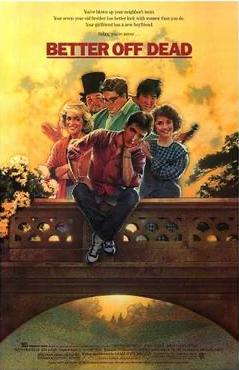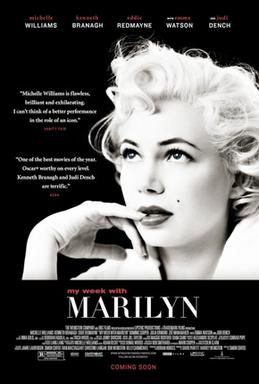 Best Books of 2011, Bonus 2010
Best Books of 2011, Bonus 2010 As the end of the year draws closer and closer (when did that happen?), everyone starts making lists of the best songs, movies, and moments of the year. I’ve decided to contribute with my personal list of the best books of 2011. These aren’t necessarily all books published from 2011 (indeed, many are not), but books that I read or re-read in 2011. And, because I wanted to do something similar in 2010 and didn’t get to in a timely fashion as is typical of me, you my fair reader will also get that list as well.
Because my reading tastes are greatly varied, these lists include short story collections, graphic novels, and plays, to name a few. Besides being broken down into the years when I read them, the lists are sub-categorized as children’s, young adult, and adult reading (although there may be some cross-over between groups). Rather than try to rank these books in any fashion, they are listed alphabetically. I’ve also provided links to my reviews of all these books, in case you are interested in finding out more about any of them. Without any further ado, here are my personal favorite reads over the past two years.
2011
Children’s books
All the Way to America: The Story of a Big Italian Family and a Little Shovel** by Dan Yaccarino
Charlie and the Chocolate Factory (Pop-Up Book) by Roald Dahl
Don’t Let the Pigeon Stay Up Late! by Mo Willems
Fancy Nancy and the Late, Late, LATE Night by Jane O’Connor
Fancy Nancy and the Sensational Babysitter by Jane O’Connor
Green Start: Little Helpers** by Ikids
If America Were a Village** by David J. Smith
If the World Were a Village** by David J. Smith
If You Give a Moose a Muffin by Laura Numeroff
Just Being Audrey** by Margaret Cardillo
Kitten’s First Full Moon by Kevin Henkes
Pierre & Sophia** (2) by Mary Shaw
The Pigeon Finds a Hot Dog! by Mo Willems
The Sandwich Swap by Queen Rania al Abdullah
The Story of Ferdinand by Munro Leaf
This Child, Every Child** by David J. Smith
The Teen Who Invented Television** by Edwin Brit Wyckoff
Welcome to Samantha’s World, 1904** by Catherine Gourley
Young adult books
Charles Dickens and the Street Children of London** by Andrea Warren
Our Eleanor: A Scrapbook Look at Eleanor Roosevelt’s Remarkable Life** by Candace Fleming
The Tale of One Bad Rat^ by Bryan Talbot
Adult books
The Adventures of Unemployed Man^ by Erich Origen and Gan Golan
Batwoman: Elegy^ by Greg Rucka
Bossypants** by Tina Fey
A Christmas Carol (2) by Charles Dickens
Committed: A Skeptic Makes Peace with Marriage** by Elizabeth Gilbert
The Bell Jar (2) by Sylvia Plath
Hard Times (2) by Charles Dickens
The Help by Kathryn Stockett
Lady Vernon and Her Daughter by Jane Rubino and Caitlen Rubino-Bradway
The Last Sherlock Holmes Story by Michael Dibdin
Let’s Take the Long Way Home** by Gail Caldwell
Little Bee by Chris Cleave
Machinal (2) by Sophie Treadwell
Mansfield Park (2) by Jane Austen
Passive Aggressive Notes: Painfully Polite and Hilariously Hostile Writings** by Kerry Miller
Persuasion (2) by Jane Austen
Pride and Prejudice (2) Jane Austen
Promises to Keep: On Life and Politics** by Joe Biden
The Question: Five Books of Blood^ by Greg Rucka
A Red Herring Without Mustard by Alan Bradley
Remarkable Creatures by Tracy Chevalier
Sense and Sensibility (2) by Jane Austen
Not Quite What I Was Planning: Six-word Memoirs by Writers Famous and Obscure** edited by Smith Magazine
This Is a Book by Demetri Martin
2010
Children’s books
Al Capone Does My Shirts by Gennifer Choldenko
Amelia Bedelia (2) by Peggy Parish
Amelia Bedelia and the Baby (2) by Peggy Parish
The Blacker the Berry by Joyce Carol Thomas
Becoming Naomi Leon by Pam Munoz Ryan
The Berenstain Bears Get the Gimmies (2) by Stan & Jan Berenstain
The Day the Toys Ran Away (2) by Leah Raechel Killeen
Different Like Coco** by Elizabeth Matthews
Don’t Let the Pigeon Drive the Bus! by Mo Willems
The Eleventh Hour (2) by Graeme Base
The Feelings Book** by Todd Parr
Ferris Wheel! George Ferris and His Amazing Invention** by Dani Sneed
Here Comes the Garbage Barge! by Jonah Winter
Hillary Rodham Clinton: Dreams Taking Flight** by Kathleen Krull
If You Give a Cat a Cupcake by Laura Numeroff
If You Give a Pig a Pancake by Laura Numeroff
If You Give a Pig a Party by Laura Numeroff
If You Take a Mouse to the Movies by Laura Numeroff
Journey Through Islamic Art (2) by Na’ima Bint Robert
The Lorax (2) by Dr. Seuss
Love, Aubrey by Suzanne LaFleur
Maid of the North by Ethel Johnston Phelps
Marie Curie** by Kathleen Krull
A Sick Day for Amos McGee by Philip Christian Stead
Teach Us Amelia Bedelia (2) by Peggy Parish
Told Tales by Josepha Sherman
The Twelve Dancing Princesses (2) by Ruth Sanderson
The Valentine Kittens (2) by Stephanie St. Pierre
A Woman for President: The Story of Victoria Woodhull** by Kathleen Krull
Yes, Let’s by Galen Goodwin Longstreth
Young adult books
Ash by Malinda Lo
The Boy Who Dared by Susan Campbell Bartoletti
The Boy Who Invented TV** by Kathleen Krull
Claudette Colvin: Twice Toward Justice** by Phillip M. Hoose
Disreputable History of Frankie Landau-Banks by E. Lockhart
Hitler Youth** by Susan Campbell Bartoletti
The Lincolns: A Scrapbook Look at Abraham and Mary** by Candace Fleming
Mockingjay by Suzanne Collins
The Outsiders (2) by S.E. Hinton
The Sledding Hill by Chris Crutcher
Speak by Laurie Halse Anderson
What I Saw and How I Lied by Judy Blundell
Wintergirls by Laurie Halse Anderson
Adult books
A Collection of Letters by Jane Austen
Carmilla by Joseph Sheridan Le Fanu
Cake Wrecks** by Jen Yates
The Daily Show with Jon Stewart Presents America** by Jon Stewart
Emma (2) by Jane Austen
Half the Sky** by Nicholas D. Kristof and Sheryl WuDunn
In Cold Blood** by Truman Capote
Gothic Classics^ by Tom Pomplun
The Housekeeper and the Professor by Yoko Ogawa
Lady Susan (2) by Jane Austen
Life, the Universe, and Everything by Douglas Adams
The Lovely Bones by Alice Sebold
Mostly Harmless by Douglas Adams
Never Let Me Go by Kazuo Ishguiro
Nocturnes by Kazuo Ishguiro
The Nose by Nikolai Gogol
Oliver Twist by Charles Dickens
Picasso at the Lapin Agile by Steve Martin
PostSecret: Extraordinary Confessions from Ordinary Lives** by Frank Warren
Secrets of Eden by Chris Bohjalian
Stitches**,^ by David Small
The Sweetness at the Bottom of the Pie by Alan Bradley
‘Tis Herself** by Maureen O’Hara
That Yellow Bastard^ by Frank Miller
The Trial (Illustrated Classics)^ by Franz Kafka
Truer Than True Romance: Classic Love Comics Retold^ by Jeanne Martinet
The Weed that Strings the Hangman’s Bag by Alan Bradley
When We Were Orphans (2) by Kazuo Ishguiro
William Kentridge Nose** by William Kentridge
** = nonfiction
(2) = re-read
^ = graphic novel
I hope you might find some books of interest on these lists. Regardless, I wish you a new year full of happy reading!



